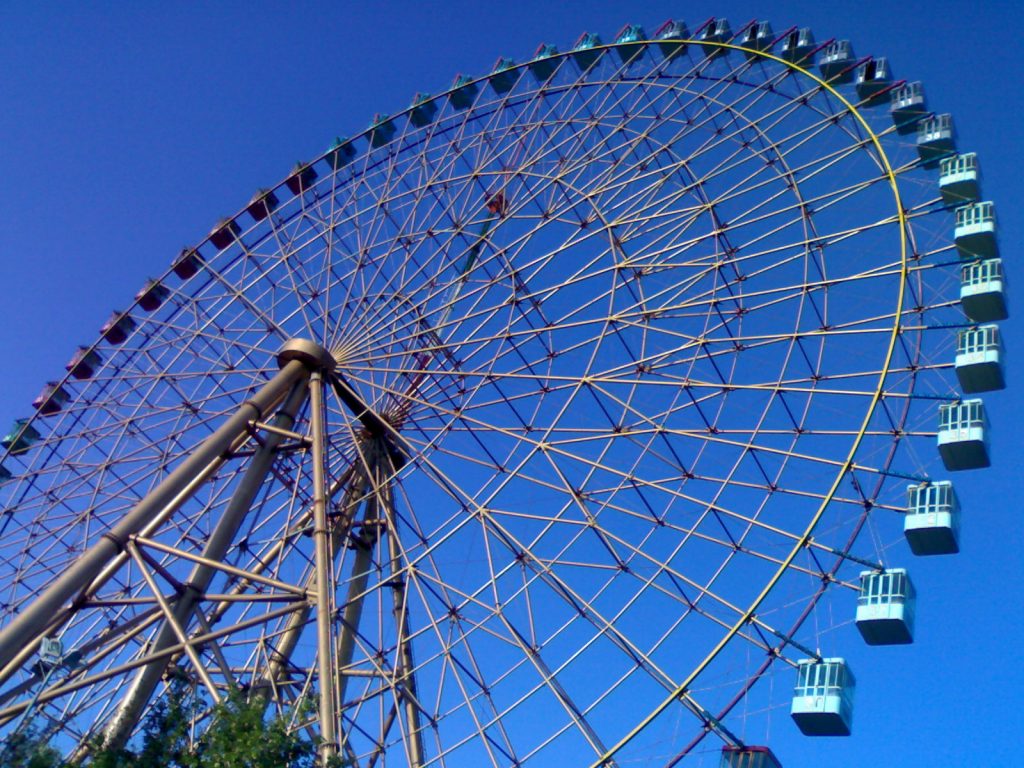The amusement park industry can generate high added value and revenues for the country, given the capabilities of domestic producers, the deputy for export promotion with the Trade Promotion Organization of Iran said.
After visiting many stands set up at the Sixth Exhibition of Amusement Centers, Parks, Technology and Leisure Equipment in Tehran’s International Fairgrounds on Monday, Mohammad Reza Modoudi told Financial Tribune that TPO is committed to support all businesses that have the potential to generate high added value.
“We will do our best to do away with regulations impeding exports and offer financial support,” he said.
Noting that the amusement park industry is relatively young in Iran, he said, “At present, we have minimal exports, amounting to no more than $5 million per year, mostly to our neighboring countries. The industry needs to be succored until it bears fruit.”
The official believes the industry has a bright future. He estimated that if supported, exports in the field can top $100 million annually in the near future.
Amusement Parks Make $130m p.a.
Also present in the exhibition, held from February 6-9, were the board members of Iranian Amusement Park Owners who, though unhappy with the level of support from the government and municipalities, were unanimously sanguine that the industry and their business will thrive in the years ahead.
“There are around 1,230 amusement parks across the country, creating more than 120,000 direct and over one million indirect jobs. According to figures obtained from the Interior Ministry for the last Iranian year (March 2015-16), close to 500 million visits were made to Iranian funfairs,” said the head of the association, Mohammad Morad Solgi.
“The combined average revenues from these amusement centers amount to around 500 billion rials ($130.6 million) per year.”
Solgi noted that over 80 units manufacturing amusement rides and devices are active in Iran whose products meet Iranian as well as international standards.
“Their annual turnover amounts to nearly $313.4 million. Our products are far better than the Chinese.”
The seasoned businessman said most of the imports include small devices, the production of which is facing difficulty inside the country due to technological shortcomings. In manufacturing heavy and semi-heavy rides, nevertheless, local producers are not only capable of meeting the domestic demand but also exporting their products as well.
Municipalities’ Demands
Reza Mardani, secretary of the association, says the industry has made eye-catching progress in recent years, but this does not mean things are all rosy.
“Our production units are working at 50% of their capacities and no significant support is granted to them,” he said.
Mardani, however, said unfortunately, investments in their business are not safe.
“Municipalities lease parks and plots of land to investors for the purpose of setting up funfairs. Investors take part in auctions and the winners get contracts, allowing them to equip these areas with amusement rides and equipment and operate these facilities for a certain period. Yet, there is no guarantee that when a contract runs out, the same investor who has spent millions on setting up a funfair or equipping a park can renew the contract,” he said.
“Instead, another auction is held and I regret to say that municipalities, following their own interests, rent out these facilities to people with connections.”
The association’s secretary complained that people who have no experience or knowledge of running recreational centers get to harvest the fruit of a tree someone else planted.
“This is in fact one of the main factors preventing the inflow of foreign investments,” he said.
Mardani underscores the safety of amusement rides and equipment in Iran and says the association has held and continues to arrange classes where experts from Iran’s Standard Organization train funfair technicians in the maintenance and repair of the rides and other equipment.
100% of Heavy Rides Manufactured Domestically
Mehdi Bayat, CEO of Bayat Industrial Group that manufactures funfair machinery, said the main raw materials used in the industry are iron and fiberglass.
“We try to use Iranian material at all times and fortunately, over the past few years, huge progress has been made in producing the required raw material domestically,” he said.
Noting that the infrastructure for producing the electronic parts of the rides and equipment is lacking in the country, the businessman said, “In Iran, we have relatively cheap labor force and energy is low-priced. These factors enable us to offer our products at more reasonable prices—sometimes one-fourth of the price of similar foreign rides—to markets inside the country and overseas. We still can’t measure up to European products in terms of technology, but I must say we are not currently in a bad situation and with a little bit of effort can do away with shortcomings in this area as well.”
Bayat said imports of small rides and equipment (usually installed in indoor recreational centers) have harmed the domestic business.
“Yet, all of the heavy, mechanical rides are manufactured by Iranian producers and we have no imports in this field,” he said.
Bayat, whose company has launched amusement parks in the UAE, Saudi Arabia, Azerbaijan, Iraq, India, Armenia, Turkmenistan and Turkey, said they are now in talks with a Norwegian company to export their rides.
“As a company active in the field for 25 years, we haven’t had serious problems in the domestic market. Yet, when it comes to exports, we face numerous handicaps, the most important of which include impediments in banking affairs, letters of credit and money transfer. When money cannot be transferred, exports will not take place.”
Bayat stressed that Iranian producers expect the government to support the business by lowering tax and insurance rates.
Mojtaba Qanbari, a funfair owner, said low-interest banking facilities are required to renovate and overhaul the rides and equipment periodically.
“Variety is key to recreational centers. If variety is not given to the rides every three to four years, funfairs will lose their customers. This requires a lot of money but the government grants no support,” he said.
Iran: Enticing New Market
Sales manager of Zamperla—one of the oldest and most prominent manufacturers of amusement rides in the world—Marco Antoniazzi said the Italian company has installed rides in Iran as well as China, North Korea, the US and European countries.
“There are Zamperla rides installed in Iran over 40 years ago and they are still working. I think this means something,” he said.
Referring to Iran’s 80 million population of mostly young people, Antoniazzi said, “Now the market has officially opened and we hope there will be huge demand for this kind of entertainment.”
Alessandro Zocca, commercial director with SBF Visa Group, also based in Italy, said it’s his third time in Iran and the company finds the market interesting.
“It’s a little bit early for Iranian rides to be able to compete with European products, the main reason being that they are copies of Chinese rides that are themselves copies of European products,” he said.
Zocca said this year there are fewer European countries taking part in the exhibition but there are still other rivals from Italy, Germany, Turkey and China.
“We are looking for new customers and confident that in a few years, it’s going to be a booming market. At present, we are here to export our products but maybe in the future we will expand our activity in Iran, who knows?”



